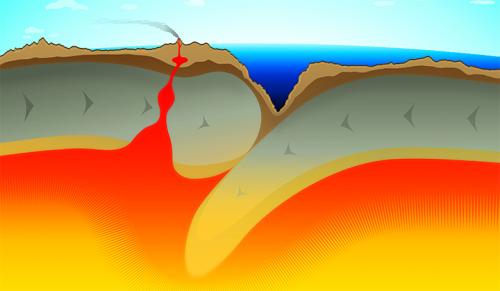
Yale-led research may have solved one of the biggest mysteries in geology — namely, why do tectonic plates beneath the Earth’s surface, which normally shift over the course of tens to hundreds of millions of years, sometimes move abruptly?
A new study published Jan. 19 in the journal Proceedings of the National Academy of Sciences says the answer comes down to two things: thick crustal plugs and weakened mineral grains. Those effects, acting together, may explain a range of relatively speedy moves among tectonic plates around the world, from Hawaii to East Timor.
Of course, in this case “speedy” still means a million years or longer.
“Our planet is probably most distinctly marked by the fact that it has plate tectonics,” said Yale geophysicist David Bercovici, lead author of the research. “Our work here looks at the evolution of plate tectonics. How and why do plates change directions over time?”
Traditionally, scientists believed that all tectonic plates are pulled by subducting slabs — which result from the colder, top boundary layer of the Earth’s rocky surface becoming heavy and sinking slowly into the deeper mantle. Yet that process does not account for sudden plate shifts. Such abrupt movement requires that slabs detach from their plates, but doing this quickly is difficult since the slabs should be too cold and stiff to detach.
According to the Yale study, there are additional factors at work. Thick crust from continents or oceanic plateaux is swept into the subduction zone, plugging it up and prompting the slab to break off. The detachment process is then accelerated when mineral grains in the necking slab start to shrink, causing the slab to weaken rapidly.
The result is tectonic plates that abruptly shift horizontally, or continents suddenly bobbing up.
“Understanding this helps us understand how the tectonic plates change through the Earth’s history,” Bercovici said. “It adds to our knowledge of the evolution of our planet, including its climate and biosphere.”
The study’s co-authors are Gerald Schubert of the University of California-Los Angeles and Yanick Ricard of the Université de Lyon in France.
(Image via Shutterstock)